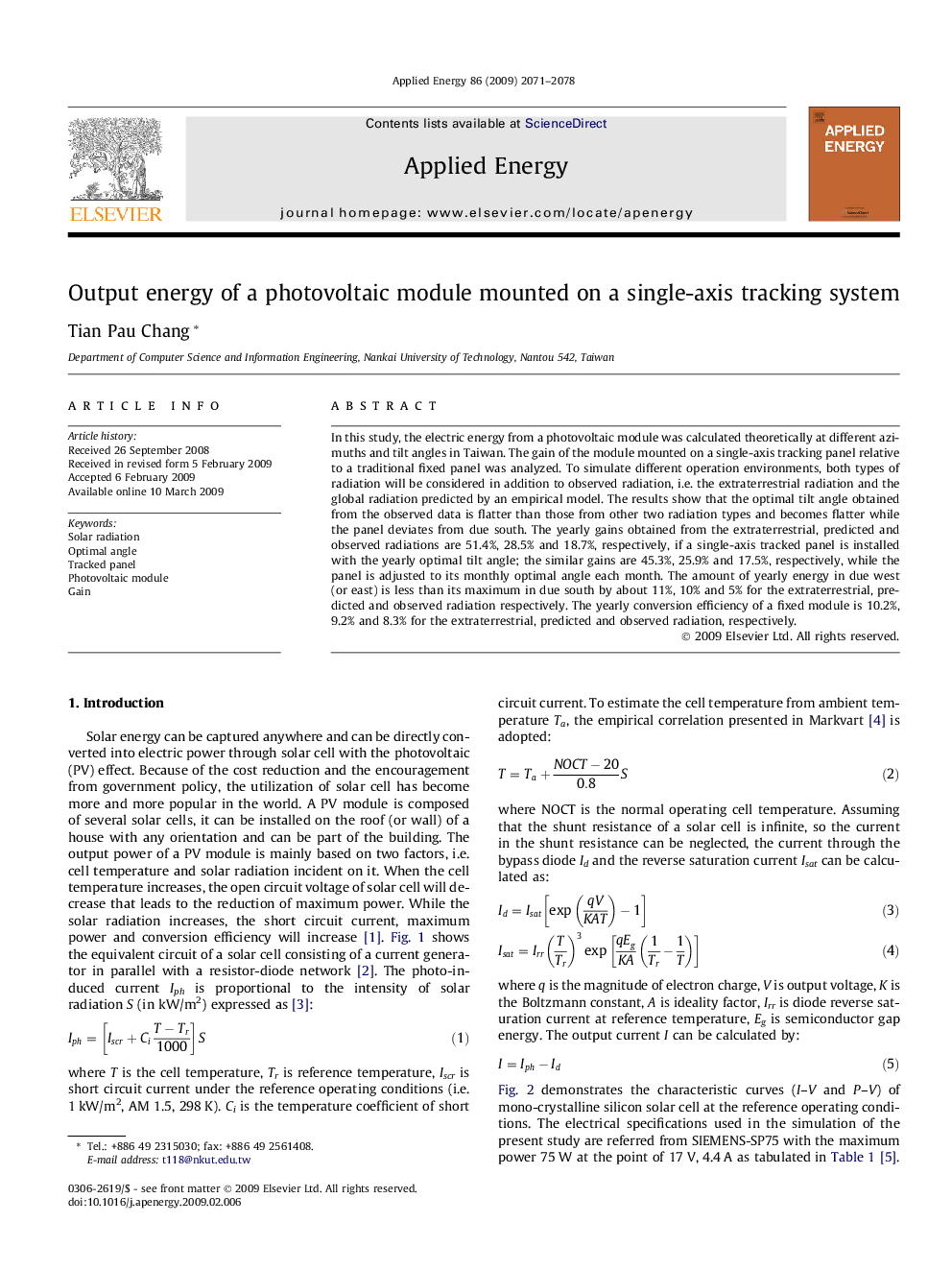| Article ID | Journal | Published Year | Pages | File Type |
|---|---|---|---|---|
| 244991 | Applied Energy | 2009 | 8 Pages |
In this study, the electric energy from a photovoltaic module was calculated theoretically at different azimuths and tilt angles in Taiwan. The gain of the module mounted on a single-axis tracking panel relative to a traditional fixed panel was analyzed. To simulate different operation environments, both types of radiation will be considered in addition to observed radiation, i.e. the extraterrestrial radiation and the global radiation predicted by an empirical model. The results show that the optimal tilt angle obtained from the observed data is flatter than those from other two radiation types and becomes flatter while the panel deviates from due south. The yearly gains obtained from the extraterrestrial, predicted and observed radiations are 51.4%, 28.5% and 18.7%, respectively, if a single-axis tracked panel is installed with the yearly optimal tilt angle; the similar gains are 45.3%, 25.9% and 17.5%, respectively, while the panel is adjusted to its monthly optimal angle each month. The amount of yearly energy in due west (or east) is less than its maximum in due south by about 11%, 10% and 5% for the extraterrestrial, predicted and observed radiation respectively. The yearly conversion efficiency of a fixed module is 10.2%, 9.2% and 8.3% for the extraterrestrial, predicted and observed radiation, respectively.
